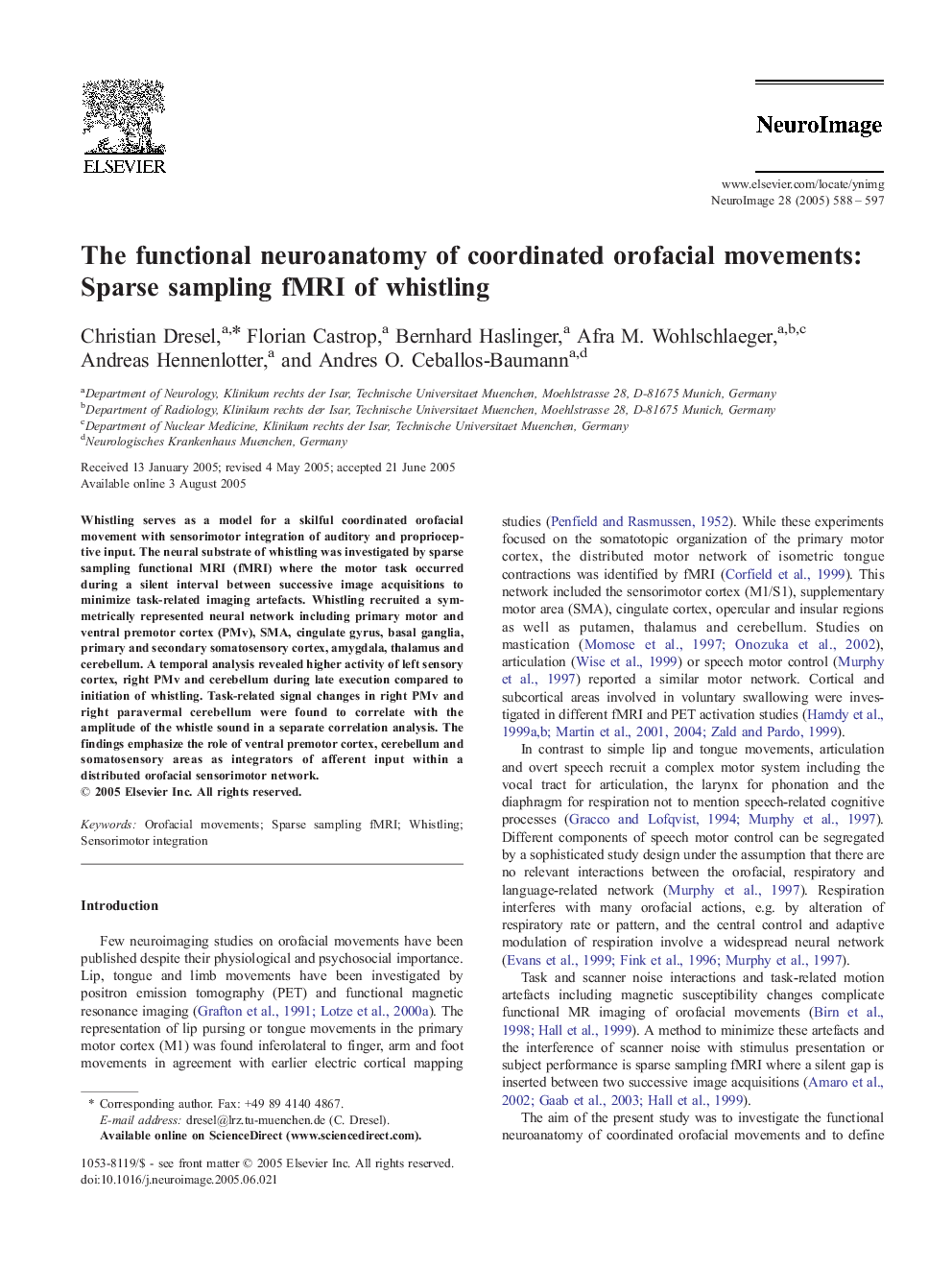| Article ID | Journal | Published Year | Pages | File Type |
|---|---|---|---|---|
| 9197716 | NeuroImage | 2005 | 10 Pages |
Abstract
Whistling serves as a model for a skilful coordinated orofacial movement with sensorimotor integration of auditory and proprioceptive input. The neural substrate of whistling was investigated by sparse sampling functional MRI (fMRI) where the motor task occurred during a silent interval between successive image acquisitions to minimize task-related imaging artefacts. Whistling recruited a symmetrically represented neural network including primary motor and ventral premotor cortex (PMv), SMA, cingulate gyrus, basal ganglia, primary and secondary somatosensory cortex, amygdala, thalamus and cerebellum. A temporal analysis revealed higher activity of left sensory cortex, right PMv and cerebellum during late execution compared to initiation of whistling. Task-related signal changes in right PMv and right paravermal cerebellum were found to correlate with the amplitude of the whistle sound in a separate correlation analysis. The findings emphasize the role of ventral premotor cortex, cerebellum and somatosensory areas as integrators of afferent input within a distributed orofacial sensorimotor network.
Related Topics
Life Sciences
Neuroscience
Cognitive Neuroscience
Authors
Christian Dresel, Florian Castrop, Bernhard Haslinger, Afra M. Wohlschlaeger, Andreas Hennenlotter, Andres O. Ceballos-Baumann,
